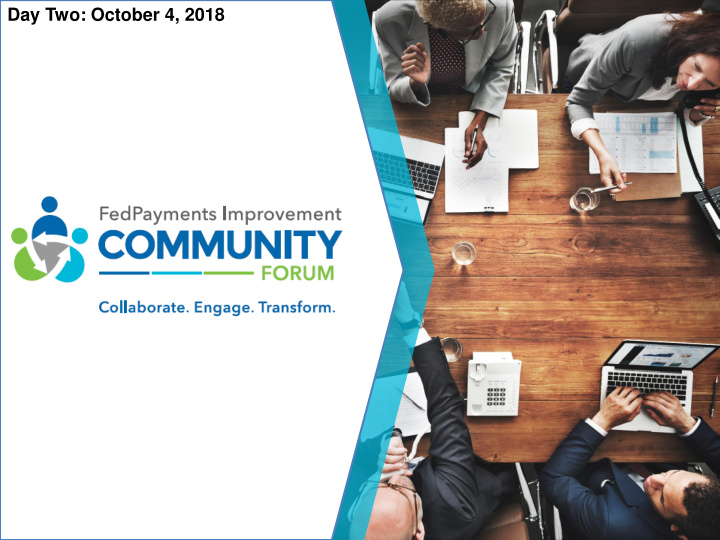



Day Two: October 4, 2018 1 1
Let’s Unblock the Chain of Data – Making B2B Payments More Efficient 2
Speaker Bios Title | Company Magnus Carlsson David Jackson Guy Berg Federal Reserve Association of Marketcy Bank of Financial Minneapolis Professionals Disclaimer: The opinions expressed are those of the individual presenters and not those of the Federal Reserve System or any Federal Reserve Bank 3
The data is there! . . . it’s just not being delivered electronically in a common standard format Efficiency in B2B payments means more than converting checks to electronic payments – it requires end-to-end automated processes throughout the chain Automation is dependent on electronic data, starting with the invoice to be paid and ending with cash application For greater B2B efficiency, accounts receivable and Accounts receivable and accounts payable management and systems accounts payable alignment must be aligned for mutual optimal needs to improve outcomes 4
Two Ends of the Chain Accounts receivable and accounts payable experience many of the same issues at opposite ends of the chain Many invoicing solutions: efficient for the supplier but not the buyer Many remittance solutions: efficient for the payer but not the payee Current solutions largely rely on OCR to read text, rules and templates to parse data in emails, and screen-scraping to retrieve information from portals 5
Electronic Invoicing Electronic invoicing (e-Invoicing) is the essential first step to achieving straight-through-processing (STP) for business-to-business transactions • For efficient STP: send and receive structured electronic invoice data Not paper or emails with pdfs • For ubiquity: connect once trade with many, creating a “network of networks” Not multiple proprietary portals and networks • For interoperability: align business and technology by standardizing delivery of electronic data The BPC is working on an e-Invoicing initiative to assess solutions that have worked in other countries 6
B2B Directories Widely available non-proprietary directories can help connect businesses for electronic payments, invoices and remittance information • To enable electronic payments, businesses need to easily and securely find trusted payment account information about their payees • Business directories must contain robust entity data and support multiple payment types • A directory is an enabler for electronic payments and electronic data Based on work originating from the BPC, the BPDA is working on a proof of concept for a B2B Directory with Discover and NACHA 7
Remittance Data – Current State Emails, proprietary networks and portals aren’t working for me Don’t send me an ACH if you can’t include remittance Quality electronic data data is more important than speed Top ways businesses receive of the payment remittance data • 55% by email • 22% by mail • 18% by customer portal Less than 4% of B2B ACHs have • 18% by EDI or CTX/CCD CTX addendas with remittance data • 15% by fax 8
Remittance Data – Discussion The BPC wants to engage industry stakeholders to explore durable solutions 1. What are financial institutions (FIs) and service providers doing to help with delivering remittance? Are FIs interested in delivering the remittance (both “from” and “to”)? 2. Does remittance data always need to travel with the payment? What are the ways FIs and service providers can deliver remittance data? If separate from the payment, how can it be connected to the payment? 3. How can FIs and service providers enable SMBs for electronic remittance data? What role can FIs play in this market segment? 9
Recommend
More recommend